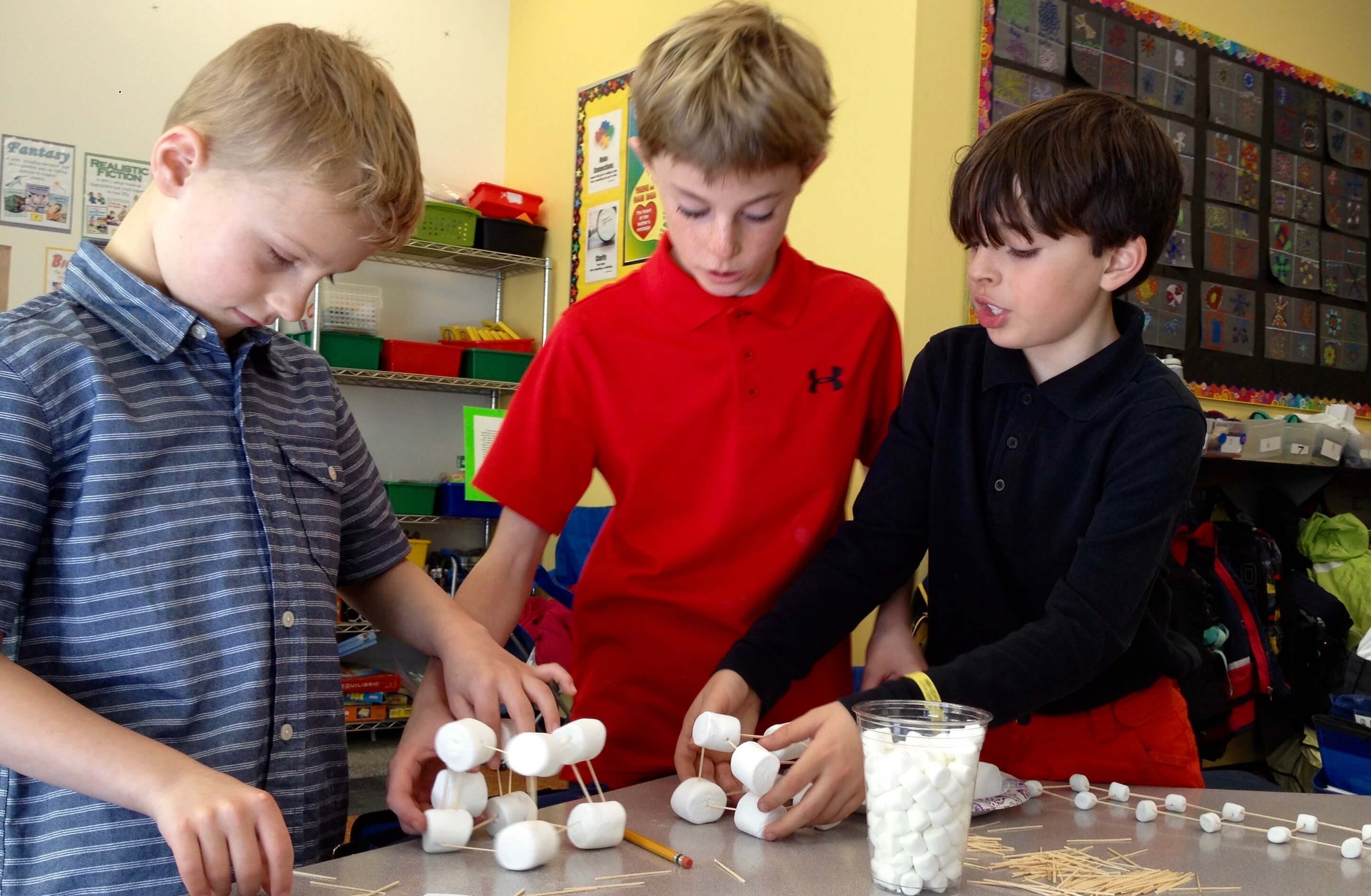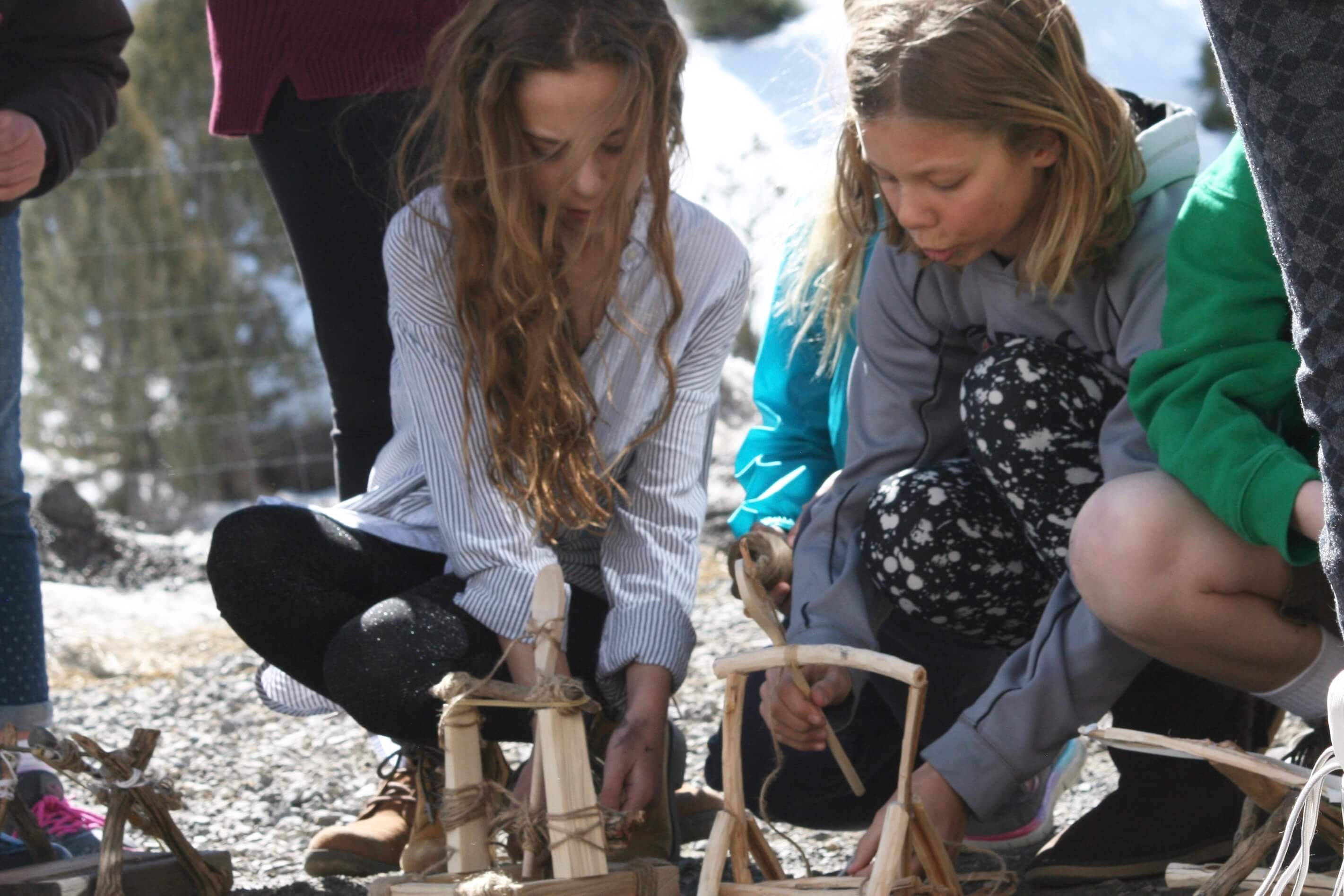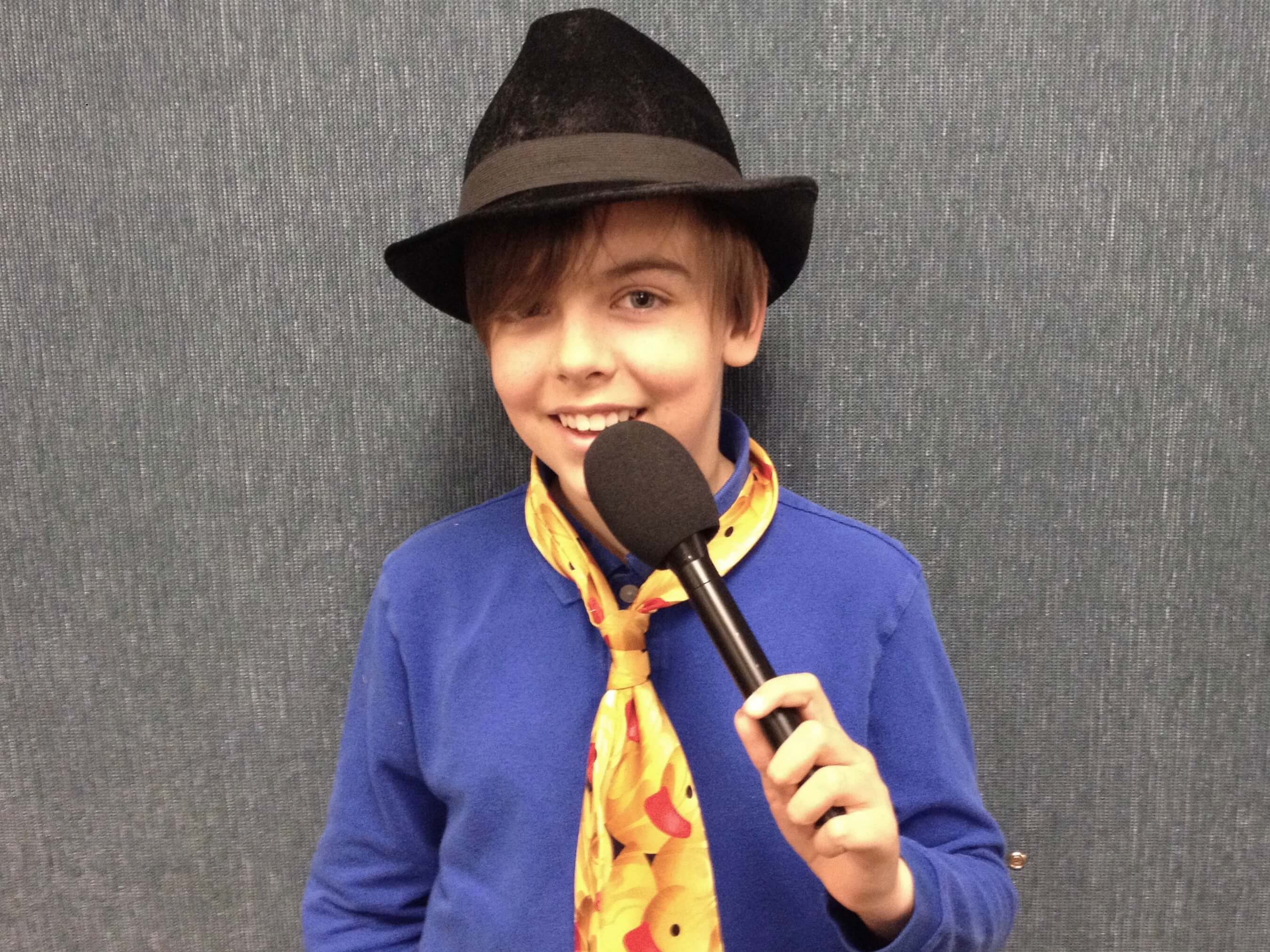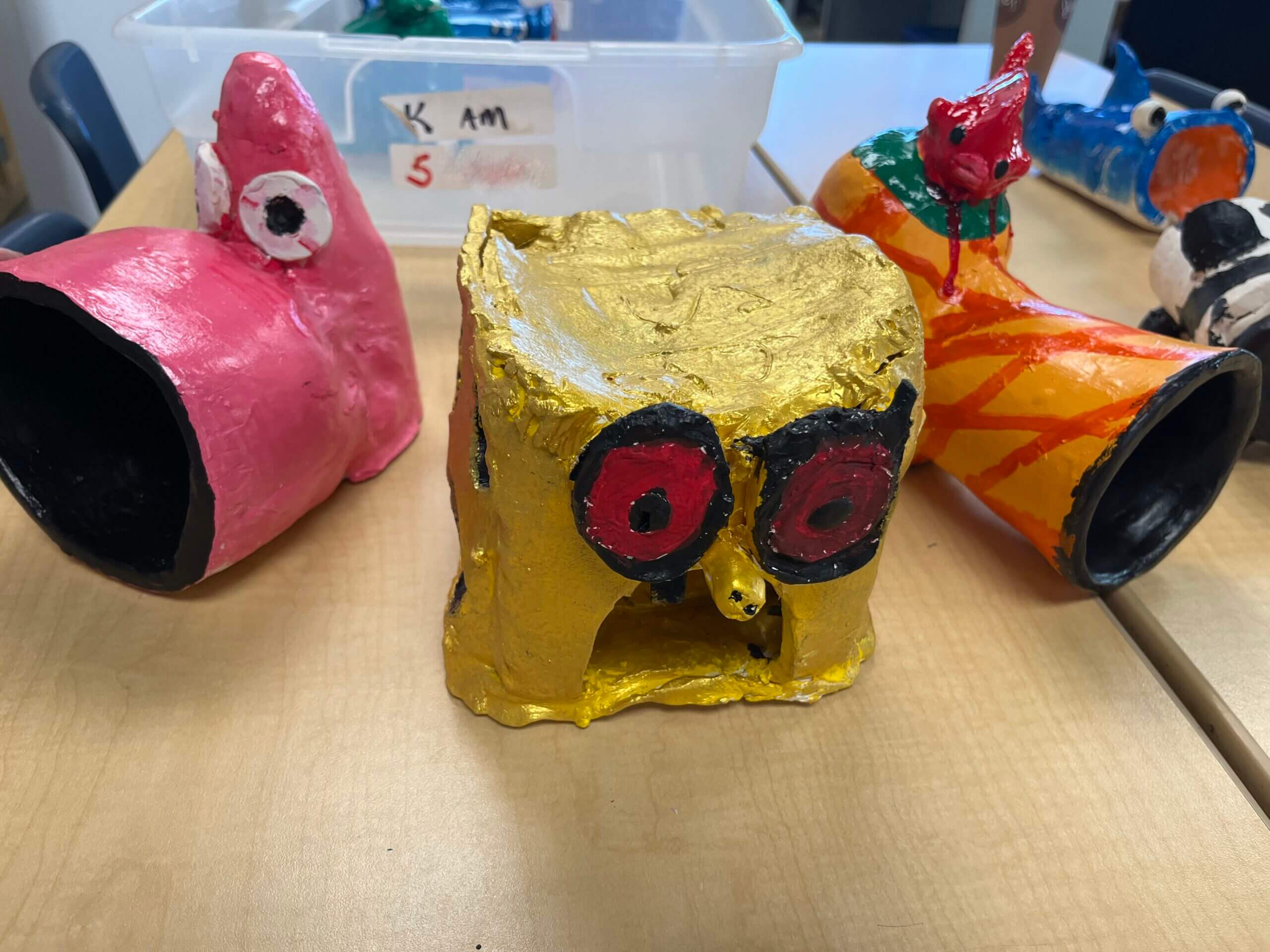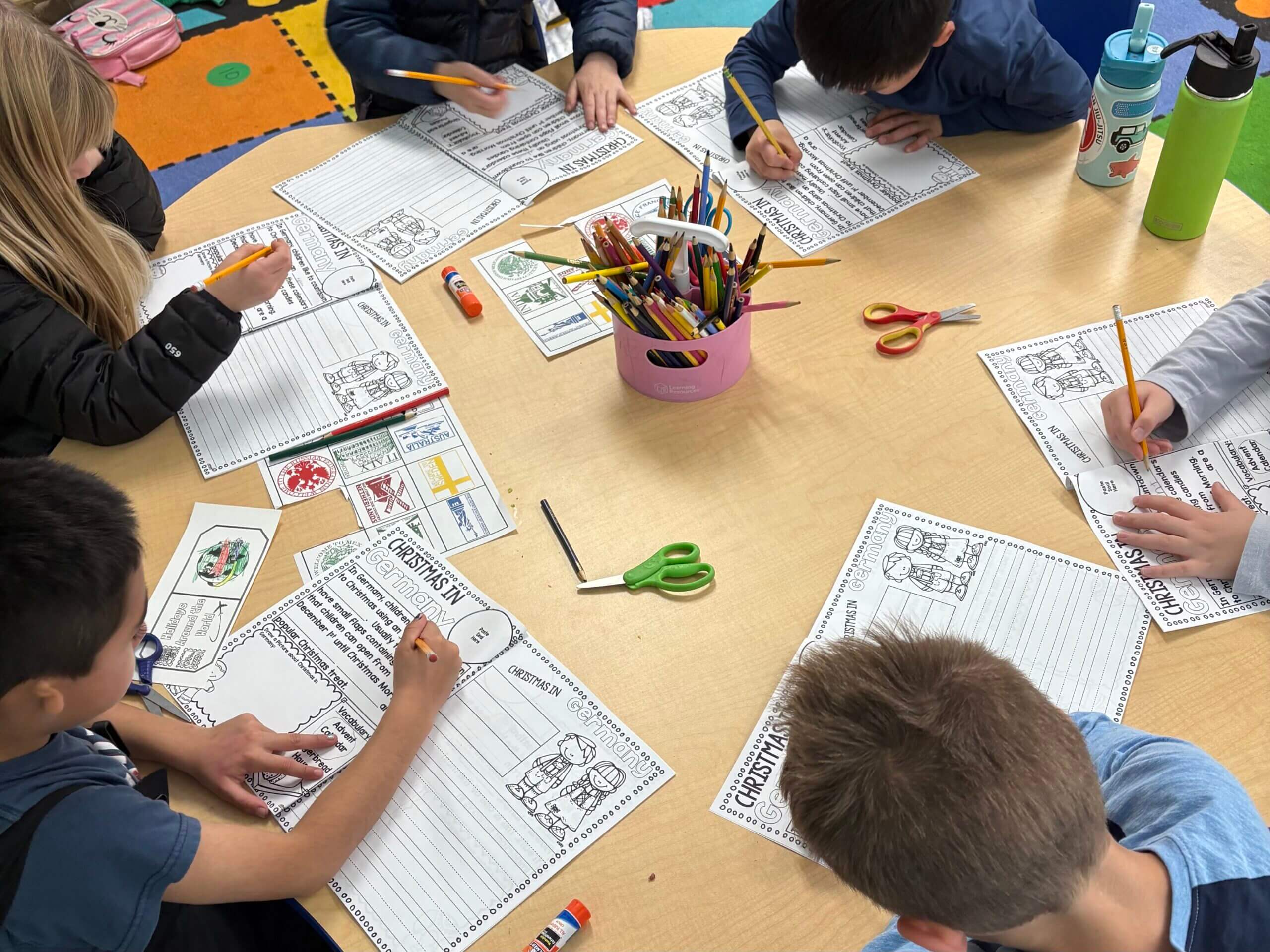Middle School Art students at WSD were given a design challenge: Combine function and aesthetics…
2. Engaging Education: Project-Based Learning
One way to powerfully activate a student’s engagement is through project-based learning. Students in all grades at WSD participate in regular curricular and cross-curricular projects as a meaningful way to gain and apply deeper knowledge. The goal of project-based learning is to place students in a problem-solving context that not only captures their interest, but stimulates their critical thinking and collaboration skills for finding solutions. Well-designed projects lead to relevant, meaningful learning, and are a highly effective way to prepare students for the 21st century workplace.
“Project-based learning encourages students to participate actively in their own learning,” explains Executive Director, Cindy Phillips, “and because the learning is ‘theirs’ students remember what they learn better and achieve higher learning goals.” But even with a skilled teacher and supportive school environment, a project is just busywork unless it is thoughtfully designed. A worthwhile project will fulfill an educational purpose, have clear and measurable objectives, and provide opportunities for active, student-driven learning. Other important elements include a compelling question to be answered, student voice and choice, real-world applications, tasks that require creativity and innovation, a forum for feedback, and a public presentation.
First graders at WSD are currently immersed in a cross-curricular project that will continue over several months. Based on the picture book by Oliver Jeffs, the theme for the project is “How To Catch a Star.” Students are working across multiple subject areas—science, art, music, literature, writing, math—all of which will inform their project and deepen their understanding. Their project will be presented to parents in a grade level exhibition this spring.
Third grade math students worked in groups to construct castles from a set number of materials. Practicing concepts they had learned previously, they first created 3-dimensional geometric shapes, then used them to build castles meeting certain specifications. Given a time limit of one class period and the challenge of competition, students worked creatively in groups to try to build a winning castle. Math students in sixth grade used a class period to measure probability in a project they called “Let’s Make a Deal.” Asked to determine how likely a scenario would occur out of the number of possible outcomes, many students were surprised to discover that their results ran opposite to their predictions.
What better way for sixth grade history students to understand the problem solving that went into the invention of the catapult than to create their own. Using only the types of raw materials available to the ancient Greeks, students built their own machines and then tested them for distance and accuracy. In the spirit of authenticity, some students even made their own glue!
After studying the Revolutionary War through the novel, Chains, by Laurie Halse Anderson, fifth grade students collaborated in groups and chose from a project “menu” of arts-integrated options, including drama, poetry, illustration, and even stand-up comedy, to convey their understanding of events. Groups had clear roles for each member, and worked to a rubric. Projects were presented to peers for feedback, and also received a self-evaluation.
Kindergarten students fractured the fairy tale, “Three Little Pigs,” in a project integrating earth science, literature, and art. They worked in groups to create a desert, jungle, ocean, or other setting for their story, then created masks for various animal characters. They also built creative versions of wood, brick or straw houses, and occupied them with pigs made from pink Play-Doh. Finally, they honed their storytelling skills as they polished their live performance for parents.
“Project-based learning is active, messy, unpredictable, and fun,” explains Lower School Director, Melinda Kaufman. “It not only engages our students, it deepens their understanding across many content areas.” Working within the parameters of a well-designed project, WSD students learn to be curious, creative, and collaborative critical thinkers. Perhaps most of all, however, students learn to enjoy the process of learning.
